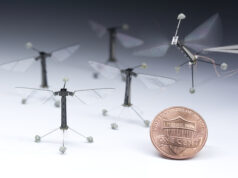Welcome to the New Age of Power Grid Anarchy
Somewhere between the blazing sun and the tangled hellscape of cyber warfare lies a truth too surreal for polite conversation. It involves hackers, solar panels, and a digital frag grenade shoved into the heart of your backyard power plant.
It’s not science fiction. It’s not paranoia. It’s the latest chapter in mankind’s ongoing experiment with technological Russian Roulette.
The folks at Forescout—brave digital spelunkers that they are—have ripped the veil off a matrix of 46 vulnerabilities buried like ticking time bombs in solar inverters made by Sungrow, Growatt, and SMA.
These aren’t just small-time bugs or a minor glitch on your power app. No, these are the kind of vulnerabilities that could let a lunatic in a basement dim your lights, brick your inverter, or worse—trigger a chain reaction that cripples the electrical grid at high noon.
Solar Inverters: The Soft Underbelly of the Grid
In a world obsessed with green energy, solar inverters are the unsung heroes converting the sun’s radiant fury into sweet, humming electricity. But here’s the kicker—they’re connected. To the internet. To the cloud. To you. To me. To everything.
And like any good connection in this digital dystopia, it’s ripe for exploitation.
Let’s start with SMA, the German engineering juggernaut. Their vulnerability—CVE-2025-0731—is like giving the keys to the castle to anyone with a demo account. Upload a malicious .aspx file disguised as a solar pic, and bam—your friendly neighborhood hacker is now inside the sunnyportal.com server, playing god with your panel.
Learn more about CVEs from MITRE.
Sungrow: A Rube Goldberg Machine of Exploits
Sungrow’s inverters are practically a playground for chaos. A trio of IDOR vulnerabilities—CVE-2024-50685, CVE-2024-50686, and CVE-2024-50693—let attackers harvest communication dongle serial numbers like candy at a cyber Halloween party. With those in hand, the attacker can ride a pipeline of weaknesses straight into the system.
And then comes the big boom: CVE-2024-50692, which lets the attacker use hard-coded MQTT credentials to send rogue commands to any inverter dongle.
If that wasn’t enough, a buffet of stack overflow flaws (CVE-2024-50694, 50695, 50698) allows remote code execution—meaning the attacker could, say, shut down generation during peak hours and stress the grid like an elephant on a tightrope.
Growatt: The Cloud is Watching (and So Are Hackers)
Growatt’s vulnerabilities aren’t just messy—they’re terrifyingly clever. Using an exposed API, an attacker can enumerate usernames, and then slide into their accounts via two separate IDOR vulnerabilities.
It’s the digital equivalent of picking the lock to your solar-powered diary, then rewriting your entries in blood-red pen.
The Good News: The Fix is In (Sort of)
Yes, there’s a silver lining. All of the vulnerabilities have been patched. But here’s the million-volt question: how many devices out there are still running outdated firmware? How many solar soldiers are unknowingly standing guard with broken spears?
And more importantly—how long before the next batch of flaws emerges from the techno-void?
Final Thought: This Ain’t Just Solar Anymore
This isn’t just about solar panels. It’s about every IoT-fueled fever dream we’ve ever embraced without asking, “Hey, is this secure?” It’s about blind trust in devices we barely understand. The hackers are already here, and the sun—once our great celestial savior—might just become the weapon we handed them.
The grid isn’t bulletproof. Hell, it might not even be waterproof.
So buckle up, folks. The cyberpunk future isn’t coming. It’s already installed, online, and quietly updating its firmware.
Want to learn how solar energy and cybersecurity intersect? Check out this deep-dive from Cybersecurity & Infrastructure Security Agency (CISA) on protecting critical infrastructure.












